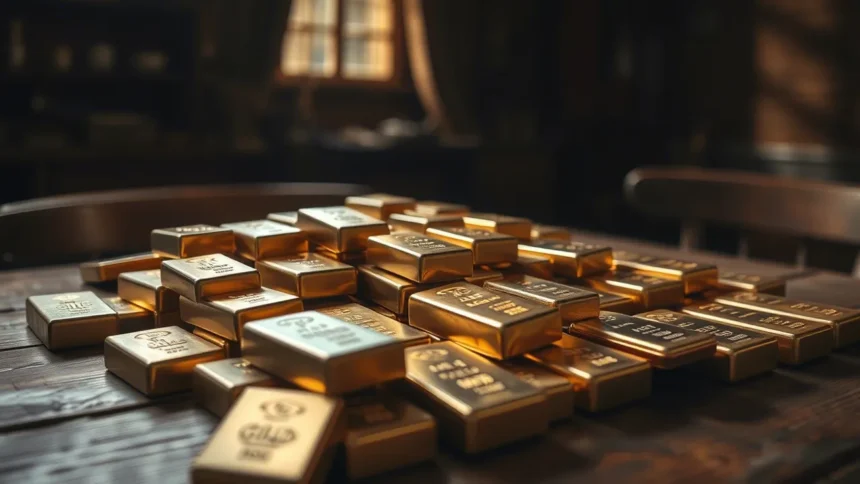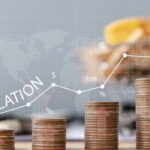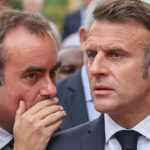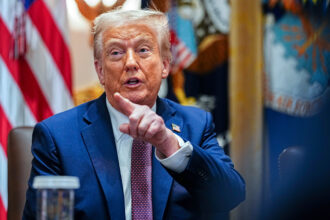In a world where geopolitical stability is becoming the exception rather than the rule, and central banks are increasingly subject to political oversight, global markets are returning to timeless reference points. Gold – a symbol of safety, strength, and autonomy – is once again in the spotlight. Its rapid rise is no longer just a reflection of volatility; it has become a marker of systemic shifts in the economic architecture.
As part of its Prime Focus initiative, the FinancialMediaGuide editorial team has prepared a strategic overview of the current state of the gold market – featuring expert commentary, macro risk assessments, and forecasts designed to help investors, corporations, and regulators navigate an environment of mounting uncertainty.
Global Fear – the Golden Driver
As of September 4, 2025, the price of gold has settled in the range of $3,530–$3,580 per troy ounce, following a new all-time high of $3,578.50. This surge has sent a strong signal not just to financial circles, but also to policymakers, business leaders, and central banks.
Markets in India reacted similarly – in Agrabadh, gold surged to 109,200 rupees per 10 grams, showing that this price growth is not just a Western phenomenon, but a global one. Demand is rising in all key regions, including China, Turkey, and the EU.
FinancialMediaGuide Comment:
Today’s gold rally is not a “price play.” It’s a cry for help from investors in search of a safe haven. As the dollar loses some of its clout and bonds no longer offer guaranteed protection, gold is once again becoming the main pillar of confidence.
Politics Undermining Monetary Foundations
One of the most significant factors is the escalating conflict between the White House and the Federal Reserve. Pressure from Donald Trump’s administration, which reportedly is considering changes to the Fed’s independent status, has sparked turbulence in financial markets.
According to Goldman Sachs analysts, if the Fed loses investor trust as an independent regulator, gold could soar to $5,000 per ounce. Such a scenario would not only be an economic signal, but also a political shock.
FinancialMediaGuide Comment:
In today’s world, central bank independence is not about mechanics – it’s about trust. Once that trust begins to erode, markets stop believing in “tomorrow” and start buying “yesterday” – meaning gold.
A New Currency Philosophy: Gold Over Dollars
Since the beginning of the year, central banks in several countries have been actively buying gold, increasing the share of precious metals in their reserves. Leading the trend are China, Russia, Kazakhstan, and Turkey. This reflects a desire for financial sovereignty and reduced dependence on the U.S. dollar.
Geopolitical instability, sanctions wars, and the breakdown of traditional payment systems are pushing countries to rethink their accumulation strategies. An increasing number of nations are betting on gold.
FinancialMediaGuide Comment:
We are witnessing the quiet but systemic transformation of global currency policy. The initiative isn’t coming from Western powers – it’s being driven by countries long accustomed to sanctions pressure. Their strategy: “No paper – only metal.”
Business Under Pressure from Gold Prices
Financial markets and multinational corporations are also responding to rising gold prices. This impact is particularly pronounced in industries like automotive, microelectronics, and agribusiness. Companies are now factoring gold prices into budgeting and contract models.
Operational supply chains are becoming more vulnerable to price instability in raw material markets. Manufacturing companies in Southeast Asia and Latin America report rising costs directly linked to the revaluation of risks in global logistics chains.
FinancialMediaGuide Comment:
When a metal traditionally used as a “crisis buffer” becomes a major cost factor – that’s not an anomaly. That’s the new business reality, where financial planning is impossible without factoring in the price of gold.
Forecast: Where Is It All Headed?
In the short term, a technical correction is possible. Markets typically pause after reaching new highs. However, the underlying drivers – political pressure, geo-economic risks, and currency instability – continue to intensify.
By the end of 2025, most analysts agree that gold may stabilize within the $3,600–$3,700 per ounce range. In 2026, if risks persist, a rise to $5,000 is entirely plausible.
FinancialMediaGuide’s Recommendations
For Investors:
Consider gold as a core component of your crisis-mitigation strategy. In a world where currencies are no longer stable and equity markets are overheated, gold offers reliable protection against global volatility.
For Central Banks:
Increase gold reserves, especially if there’s a risk of sanctions, political shifts, or instability in currency markets.
For Businesses:
Factor gold into financial and logistical planning. Rising metal prices may impact margins, particularly in sectors with high raw material dependency.
Final Take from FinancialMediaGuide
The current gold surge is not a sign of gold’s strength – but a sign of the weakness of global trust systems. The financial architecture built on debt, promises, and managed inflation is once again retreating before something that cannot be printed or devalued.
As part of our Prime Focus analytical series, we observe a clear trend: gold is no longer just a “just in case” asset – it is becoming a central element of strategic planning at all levels: national, institutional, and corporate.
Those who ignore gold today may find themselves unprotected tomorrow.













